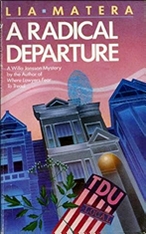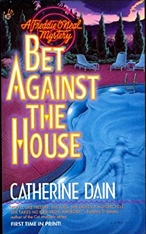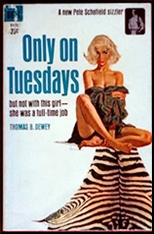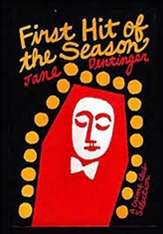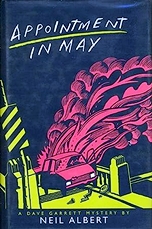Thu 7 Sep 2023
An Archived PI Mystery Review by Barry Gardner: MARCELE DAY – The Disappearances of Madalena Grimaldi.
Posted by Steve under Bibliographies, Lists & Checklists , Characters , Reviews[3] Comments
MARELE DAY – The Disappearances of Madalena Grimaldi. Claudia Valentine #4. Walker, hardcover, 1996. First published in Australia by Allen & Unwin, paperback, 1994.
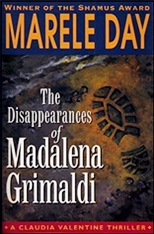
I missed the first of these (*), which won a 1993 Shamus —The Last Tango of Delores Delgado. The title deserved an award, anyway. Claudia Valentine is an Australian Pl operating out of Sydney, though a good bit of the action takes place in Melbourne.
Claudia Valentine has just found out that her father, who deserted her mother and her when she was a child, died a derelict a decade ago. At about the same time she takes the case of a runaway and missing 15 year old child. The father is an intemperate and maybe brutal man, the mother emotionally (at least) bruised. So Claudia has two cases, though she’s only getting paid for one: find the missing girl, and a dead father she didn’t know she’d missed, but who now obsesses her.
There are two stories here, obviously, and I’ll save you some suspense and tell you that they’ re not connected. The personal search is the primary story; indeed, I found the putative main plot to be almost an afterthought, and not that interesting. Which isn’t to say it was a bad book — it wasn’t. Day writes very readable first-person prose, and Valentine is a believable and likable character
Still, here’s another not-too-thick “mystery” that without a sub-plot wouldn’t be a book, only partially redeemed by the fact that the subplot does involve detection.
—
(*) Steve here. The books were apparently published out of order in the US, if at all. Here’s a list of all four books as (I assume) they appeared in Australia:
1. The Life and Crimes of Harry Lavender (1988)
2. The Case of the Chinese Boxes (1990)
3. The Last Tango of Dolores Delgado (1992)
4. The Disappearances of Madalena Grimaldi (1994)

